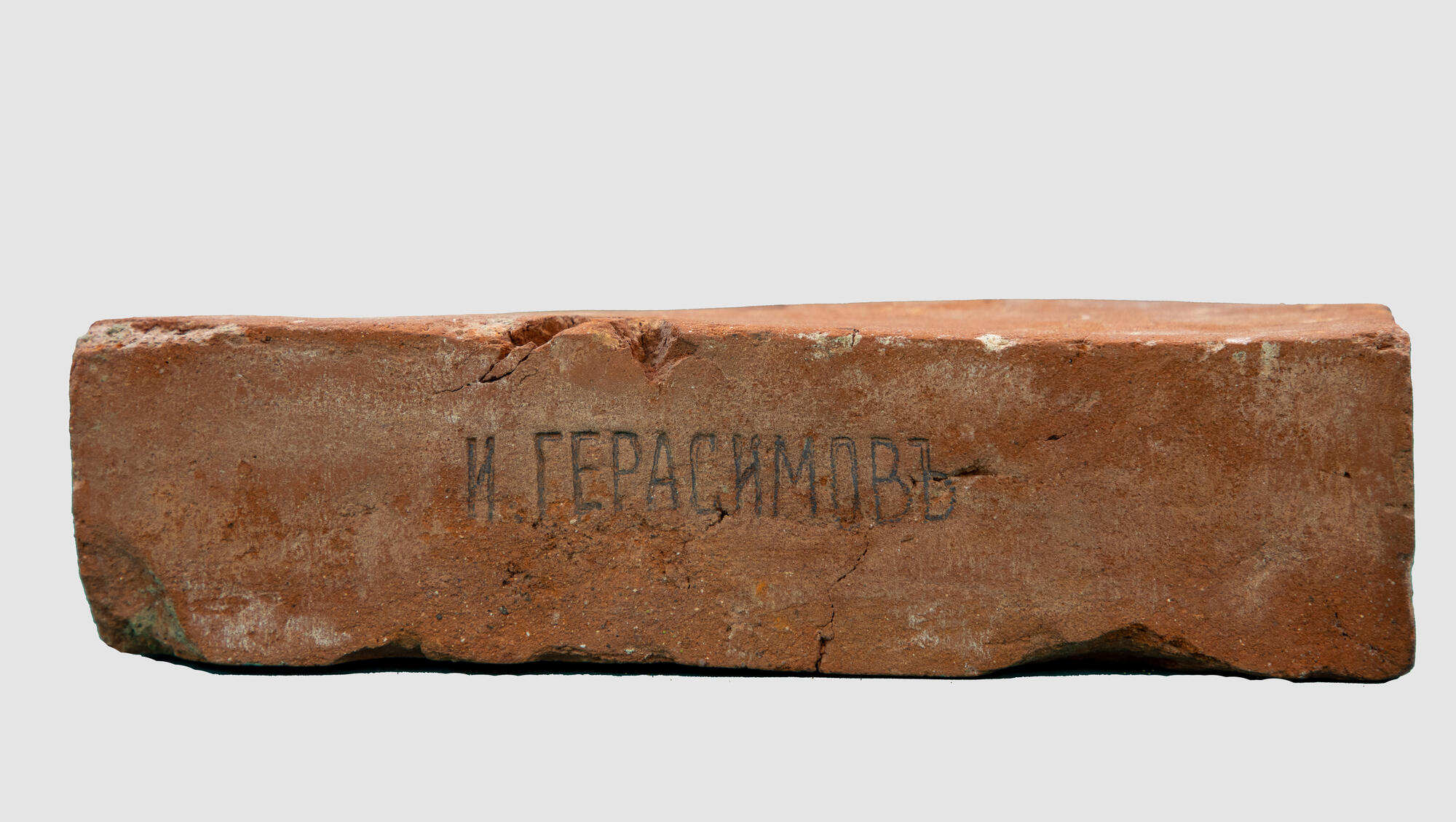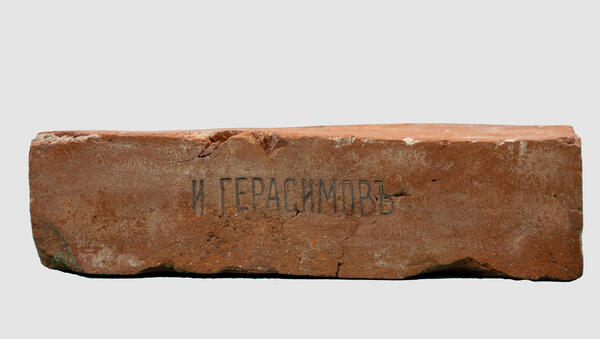Moscow resident Ivan Gerasimov never had his own land to extract clay. Nevertheless, for 30 year he ran a large and successful brick factory. He took part in brick production of the famous Moscow company of the Gusarevs and was their authorized agent. In the late 1880s Gusarev’s widow closed down the factory, and Ivan Gerasimov managed to put his expertise to use in Mytishchi.
In 1888, the Department of Land send an order to the manager of the Moscow Land Office to “rent out a land lot of 22 quarters in Mytishchi to Ivan Gerasimovich Gerasimov for him to start a brick factory and a clay and sand extraction facility, for 24 years, the cost of the forest growing on this lot paid…”
However, Gerasimov managed to start building his factory only after six months of tiresome disputes with the Chelnokov brothers over the rented land. Very soon, the factory and the access railroad from Mytishchi to the kiln were finished. He put the brand mark “I. Gerasimov” on the stretcher face (the long side) of each brick.
The assessment book of 1912 helped determine the “property value” of the Moscow merchant Ivan Gerasimov’s brick factory. It could match the cost of the factory owned by the major Partnership of V. K. Shaposhnikov, M. V. Chelnokov and Co and was valued at almost two times less the cost. However, by terms of Moscow, Gerasimov’s factory was rather big. Still, compared to other factories in Mytishchi it produced less bricks than, for example, Chelnokov’s and Voronin’s factories.
Just before the start of World War One, Gerasimov’s factory had an annual turnover of 150,000 rubles, with 160 people engaged in production. Bricks were molded manually. In March 1917, the architect Kurt Betge who supervised the construction of the factory of self-propelled vehicles in Podlipki that used bricks supplied by the Mytishchi factories, noticed the following:
In 1888, the Department of Land send an order to the manager of the Moscow Land Office to “rent out a land lot of 22 quarters in Mytishchi to Ivan Gerasimovich Gerasimov for him to start a brick factory and a clay and sand extraction facility, for 24 years, the cost of the forest growing on this lot paid…”
However, Gerasimov managed to start building his factory only after six months of tiresome disputes with the Chelnokov brothers over the rented land. Very soon, the factory and the access railroad from Mytishchi to the kiln were finished. He put the brand mark “I. Gerasimov” on the stretcher face (the long side) of each brick.
The assessment book of 1912 helped determine the “property value” of the Moscow merchant Ivan Gerasimov’s brick factory. It could match the cost of the factory owned by the major Partnership of V. K. Shaposhnikov, M. V. Chelnokov and Co and was valued at almost two times less the cost. However, by terms of Moscow, Gerasimov’s factory was rather big. Still, compared to other factories in Mytishchi it produced less bricks than, for example, Chelnokov’s and Voronin’s factories.
Just before the start of World War One, Gerasimov’s factory had an annual turnover of 150,000 rubles, with 160 people engaged in production. Bricks were molded manually. In March 1917, the architect Kurt Betge who supervised the construction of the factory of self-propelled vehicles in Podlipki that used bricks supplied by the Mytishchi factories, noticed the following:



